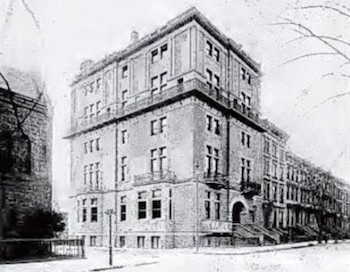
Owned by a prestigious African American couple, Elizabeth and Rev. James Gloucester, Remsen House was an upscale boarding establishment situated in the heart of Brooklyn Heights, New York. Located at 144 Remsen Street on the corner of Remsen and Clinton Streets in what is now Brooklyn, it was formerly known as The Hamilton Club, named after Revolutionary War leader and first U.S. Secretary of the Treasury, Alexander Hamilton.
The Hamilton Club was originally an exclusive men’s club founded to provide a place for the city’s elite to gather to eat, drink, and discuss politics. By the 1860s, the club membership had expanded and could no longer be accommodated at the Remsen Street location. When the club moved, the building was sold to African American entrepreneur, Elizabeth Gloucester, and her husband, Rev. James Gloucester, shortly after they arrived in Brooklyn in 1865.
The Gloucesters were able to purchase the five-story building shortly after they sold all of their property in Manhattan. With approximately $150,000, they purchased the Hamilton Club and renamed it Remsen House after the street where it was located. The Gloucesters turned the top floor of their property into the family home where they frequently held meetings and dinners. The other floors were rented to commercial enterprises.
In 1878 the couple formally opened Remsen House as a boarding house, and the building became Elizabeth’s main occupation and source of income. She held meetings for the Freedman’s Friend Society, Union Soldier Associations, and the Ladies National Union Fair. She hosted family friend, Frederick Douglass, whenever he was in town. Many prominent white residents of New York City and Brooklyn (which at that time was still a separate municipality) like Henry Ward Beecher and his sister, Harriet Beecher Stowe, also frequently held or attended meetings at the property.
At the time of Elizabeth’s death in 1883, the property had increased in value to about $300,000, which in today’s standards is about $7 million dollars. The property was to be divided into seven parts and distributed among her husband and five surviving children. Elizabeth Gloucester’s funeral was held in Remsen House, and newspapers from all over the world reported the funeral service and wrote about “the remarkable colored woman” who was said to have been the richest woman of her race.
After the death of Rev. Gloucester in 1890, the couple’s daughters ran the property for a few more years and then eventually sold it back to the Hamilton Club. Remsen House was demolished in 1936.

